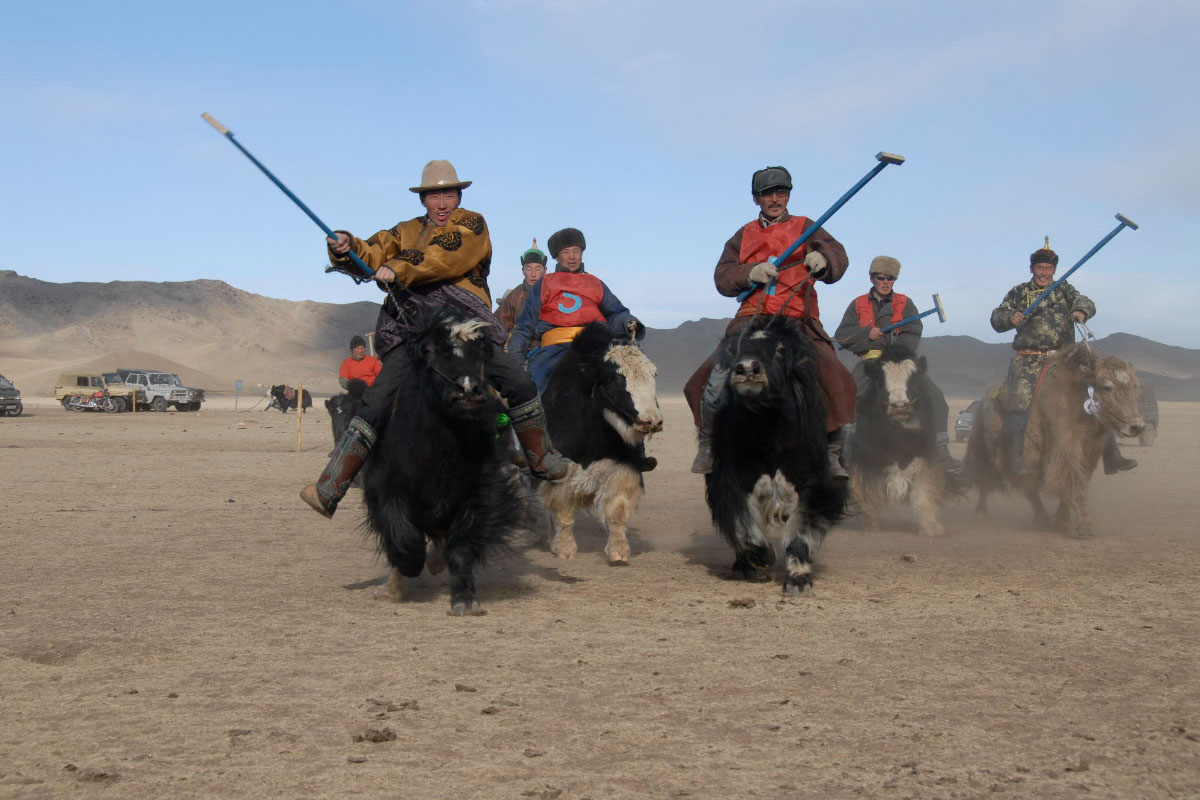
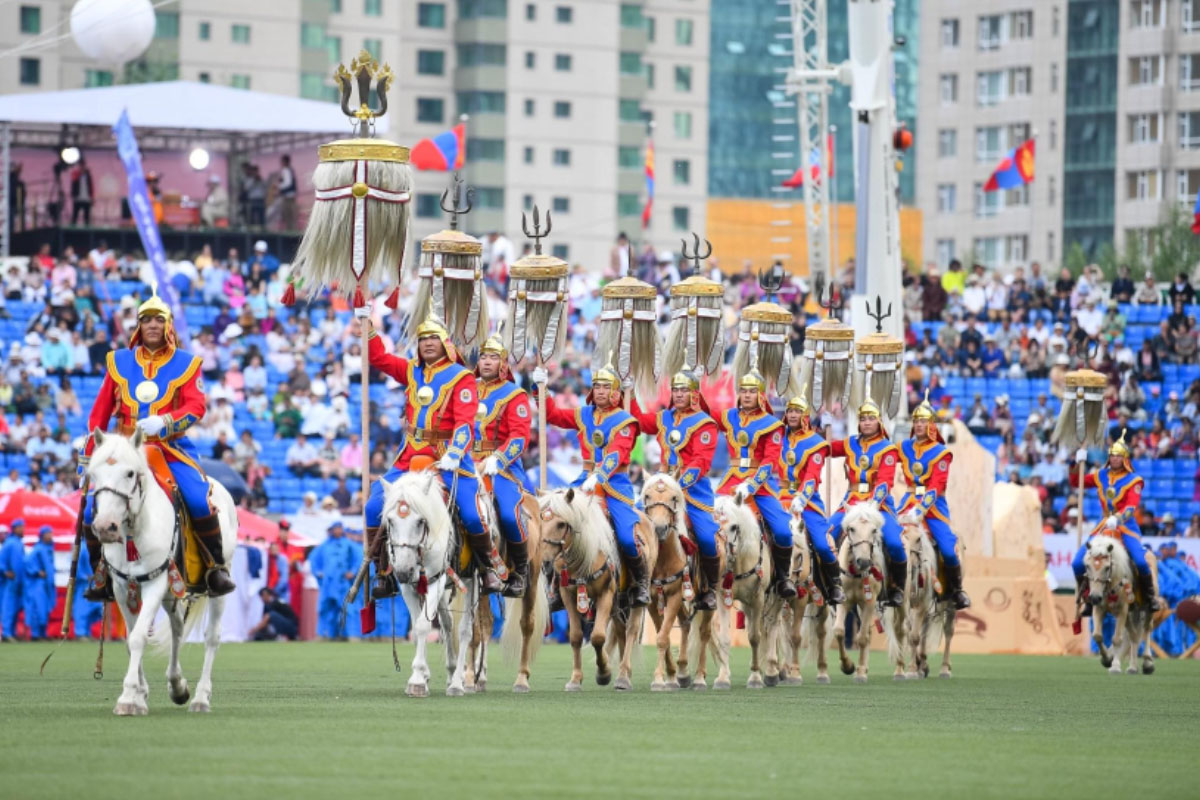
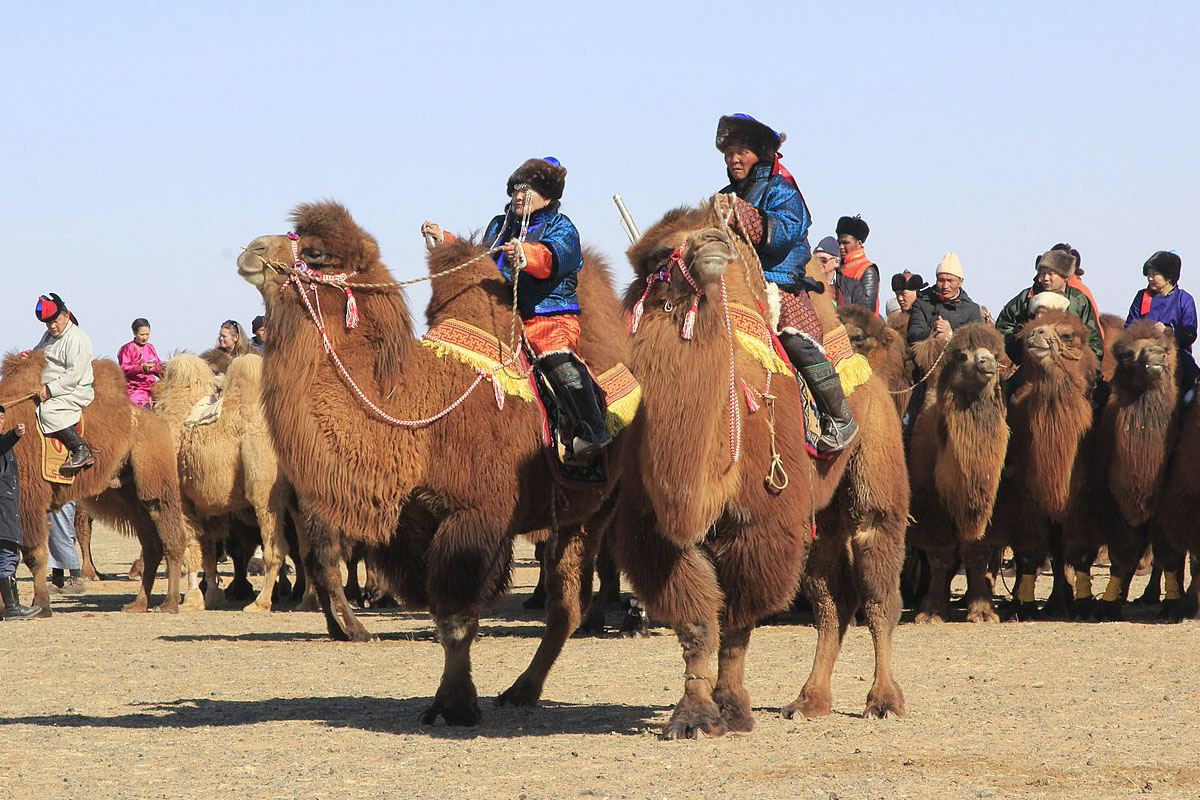
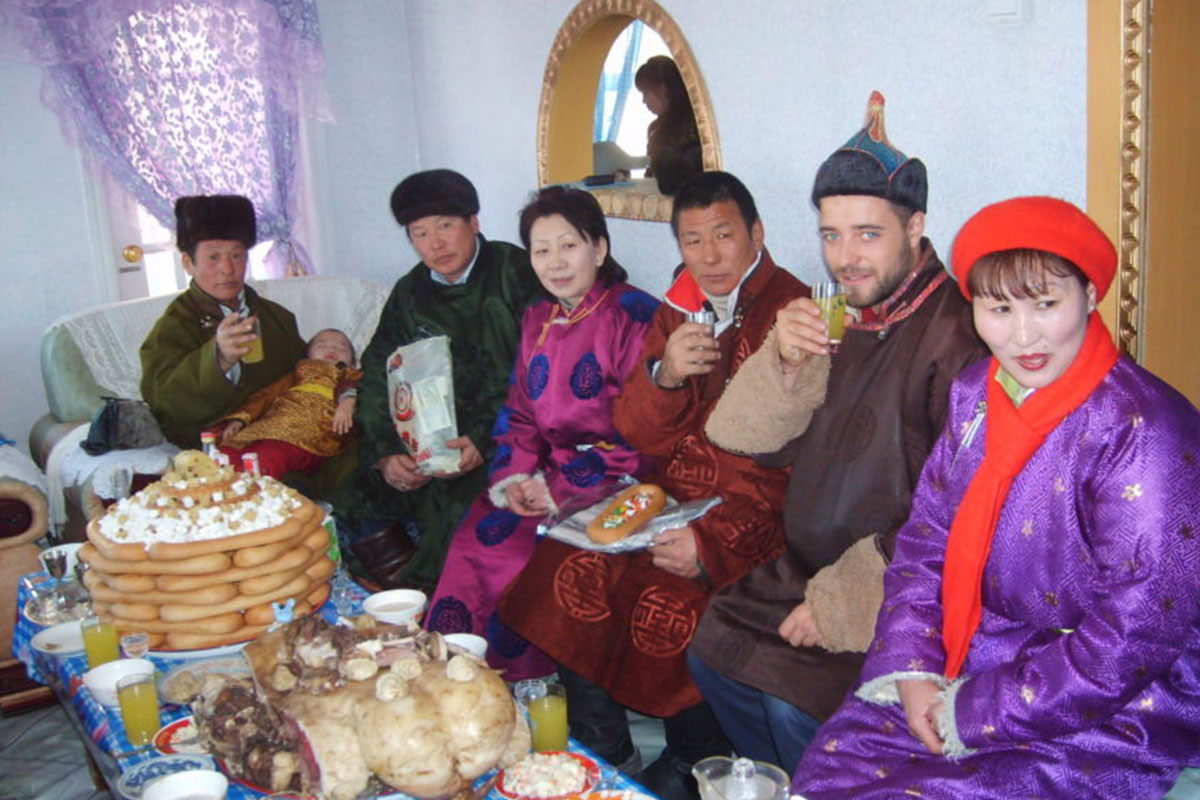
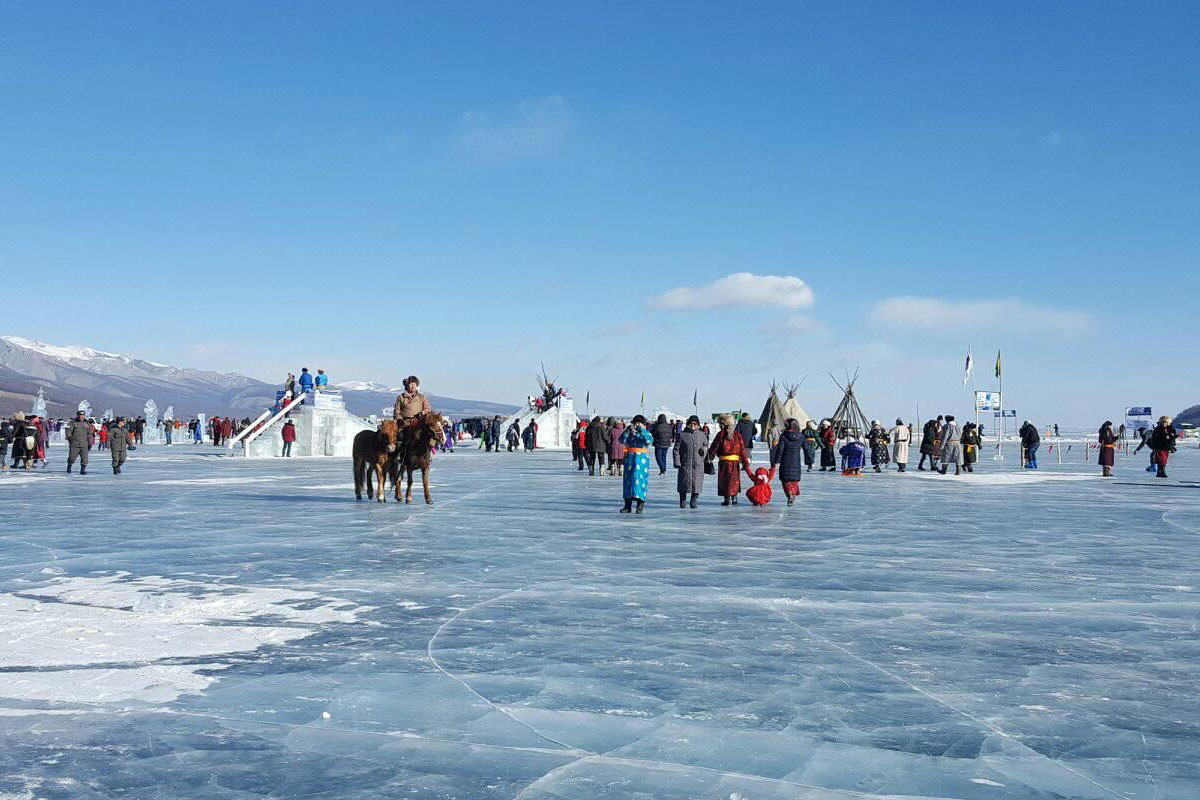

The Mongolian Yak Festival is an annual event held in Mongolia that celebrates the importance of yaks in the nomadic culture. It’s held each year on the 23rd of July, in Orkhon Valley, in Bat Ulzii sum, province of Ovorkhangai. The festival is an opportunity for visitors to experience the nomadic way of life and learn about the various uses of yaks, from transportation to food and clothing.
One of the highlights of the festival is the Yak Race, where nomads showcase their skills in racing yaks. Visitors can also observe traditional yak-herding activities such as milking, wool shearing, and loading yaks with goods. The festival also features a variety of food stalls and markets selling local handicrafts and souvenirs, as well as nomadic foods such as roasted meats and dairy products made from yak milk.
In addition to the cultural and entertainment aspects of the festival, there is also an educational component. The festival provides a platform for visitors to learn about the importance of preserving the yak population and its ecosystem, and raises awareness about the challenges faced by nomads in maintaining the traditional way of life.
In conclusion, the Mongolian Yak Festival is a unique and exciting event that offers a glimpse into the nomadic culture and the significance of yaks in the lives of the nomads. Whether you’re interested in yaks, nomadic culture, or simply in experiencing something different, the Mongolian Yak Festival is a must-visit event.
Read More
The Gobi Camel Festival is an annual event that takes place in the heart of the Gobi Desert, Mongolia. This festival showcases the camels of the region and their important role in the lives of the local nomads. It’s an opportunity for visitors to learn about the nomadic culture, witness traditional camel races, and participate in various other activities such as camel riding, singing, and dancing.
One of the highlights of the festival is the Camel Beauty Contest, where nomads showcase their most beautiful and well-groomed camels. Visitors can also observe traditional camel-herding activities, such as milking, wool shearing, and loading the camels with goods. The festival also features a variety of food stalls and markets selling local handicrafts and souvenirs, as well as nomadic foods such as roasted meats and dairy products.
The Gobi Camel Festival is not only a celebration of the camels and their importance to the nomadic lifestyle, but also a celebration of the Gobi Desert itself. The festival provides an opportunity for visitors to explore this unique and harsh landscape and learn about the challenges faced by the nomads who live there.
In conclusion, the Gobi Camel Festival is a unique and fascinating event that offers a glimpse into the nomadic way of life and the beauty of the Gobi Desert. Whether you’re interested in camels, nomadic culture, or simply in experiencing something different, the Gobi Camel Festival is a must-visit event.
Read More
The Khuvsgul Ice Festival is an annual winter festival held in the Khuvsgul Province of Mongolia. This festival celebrates the unique and beautiful frozen lake Khuvsgul, which is considered to be the source of fresh water for Mongolia and is one of the largest freshwater lakes in Asia. The festival is an opportunity for visitors to experience the traditional nomadic culture and customs of the region, as well as participate in winter sports and activities such as ice fishing, horse sledding, and ice skating.
One of the highlights of the festival is the ice sculpting competition, where local artists and sculptors showcase their skills by creating intricate and stunning ice sculptures. Visitors can also enjoy traditional Mongolian performances such as throat singing and horseback riding, and sample the local cuisine, including steaming hot noodle soups and meat-filled pastries.
The Khuvsgul Ice Festival is not just about having fun, it also has a conservation aspect. The festival raises awareness about the importance of preserving the lake and its ecosystem, and emphasizes the role it plays in supporting the local communities and their traditional way of life.
In conclusion, the Khuvsgul Ice Festival is a unique and exciting event that offers a glimpse into Mongolia’s rich cultural heritage and the beauty of its natural wonders. It’s a must-visit for anyone interested in experiencing the nomadic lifestyle, enjoying winter sports, and learning about conservation efforts.
Read More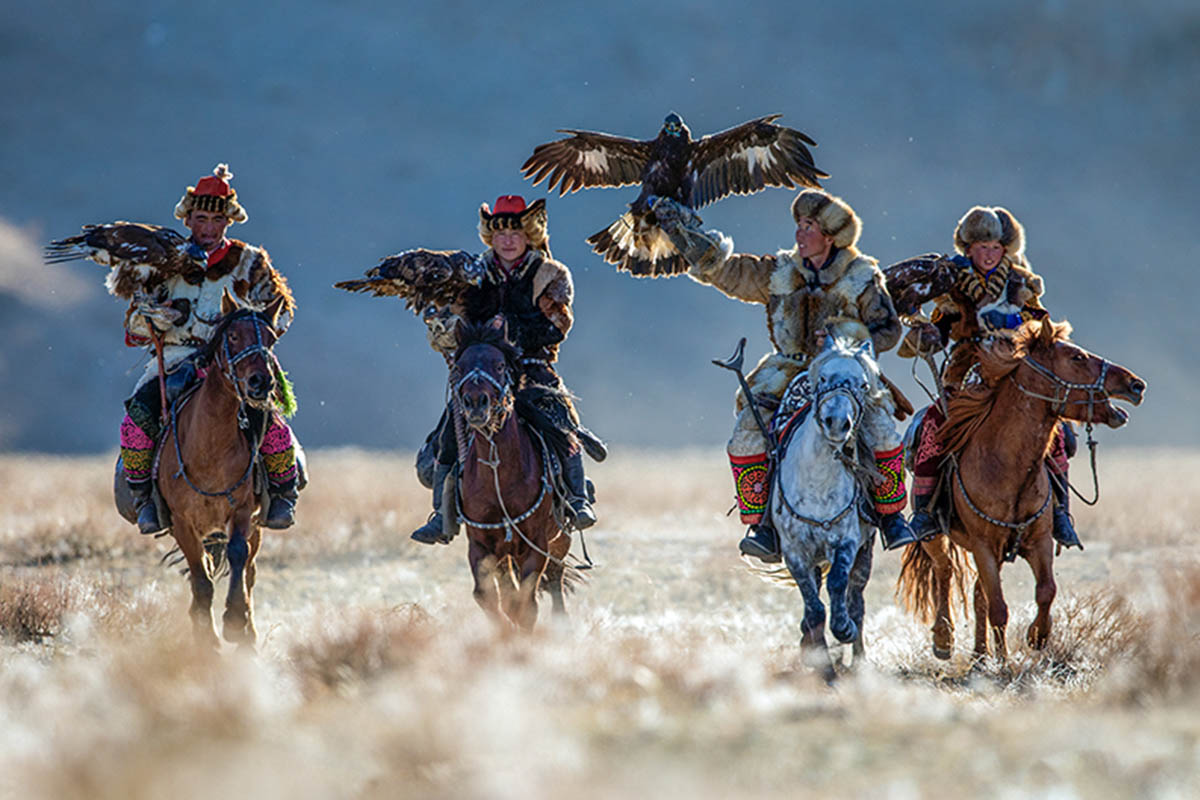
The Mongolian Golden Eagle Festival is an annual event held in Mongolia to celebrate the relationship between nomadic eagle hunters and their trained eagles. This festival showcases the hunting skills of the eagle hunters and the partnership they have formed with their eagles. The festival is usually held in the Bayan-Ölgii Province in Western Mongolia and attracts tourists and eagle hunters from all over the country.
Eagle hunting is a traditional practice that has been passed down through generations in Mongolia. It is a form of subsistence hunting, where the hunters use trained eagles to hunt small animals such as foxes and hares. The eagle hunters bond with their eagles from a young age, and the two form a close partnership over the years.
The Golden Eagle Festival is a celebration of this partnership, and a way for eagle hunters to showcase their skills and the abilities of their eagles. The festival features various competitions, such as the speed and accuracy of the eagle’s dive, and the ability of the eagle to retrieve the prey. These competitions are judged by a panel of experts, and the winners are awarded with prizes such as traditional costumes and gifts.
In addition to the eagle hunting competitions, the festival also features cultural performances and demonstrations, such as traditional horse riding and archery. The festival is also a time for nomads to come together, exchange stories, and participate in traditional games and activities.
The Golden Eagle Festival not only celebrates the partnership between the eagle hunters and their eagles, but it also serves to preserve the traditional nomadic culture of Mongolia. The festival helps to promote the cultural heritage and values of the nomads, and to raise awareness about the traditional practice of eagle hunting.
In conclusion, the Mongolian Golden Eagle Festival is an important cultural event that showcases the unique relationship between nomadic eagle hunters and their trained eagles. It is a celebration of the hunting skills, cultural heritage, and traditions of the nomadic people of Mongolia, and serves to preserve the legacy of eagle hunting for future generations.
Read More
Tsagaan Sar, also known as the White Moon Festival, is a traditional lunar New Year celebration in Mongolia. It is celebrated at the end of January or beginning of February, based on the lunar calendar, and is one of the most important cultural events in Mongolia.
The celebration of Tsagaan Sar lasts for several days, and includes various activities such as singing, dancing, feasting, and the exchange of gifts. Family members gather to pay respect to the elderly, participate in traditional games, and to renew relationships. It is considered a time for wishing for health, happiness, and prosperity in the new year.
One of the central elements of Tsagaan Sar is the “airag” or fermented mare’s milk, which is traditionally served in a special bowl called a “dzuur”. The airag is considered a symbol of renewal and purity, and is shared among family members as a sign of unity and good luck. The meal itself is a grand feast that can include dishes such as boiled mutton, rice, and curd.
Another important aspect of Tsagaan Sar is the gift-giving tradition, where family members exchange gifts with one another, such as traditional clothing or sweets. It is customary for children to receive new clothes and for the eldest member of the family to receive the most respect.
In addition to the food, drink, and gift-giving, Tsagaan Sar is also a time for various cultural and traditional games, such as horse racing, wrestling, and archery. These games are not only a way to celebrate the new year, but also a way to showcase the skills and strength of the participants.
In conclusion, Tsagaan Sar is a rich and vibrant cultural celebration that has been a part of Mongolian tradition for centuries. It is a time for families to come together, renew relationships, and wish for health, happiness, and prosperity in the new year. Through the exchange of gifts, traditional games, and feasting, Tsagaan Sar is a celebration of the values, heritage, and traditions that make Mongolia unique.
Read More
Naadam is a traditional festival in Mongolia, which is celebrated annually and is a symbol of Mongolian culture and heritage. It is held on July 11th and 12th and is considered one of the largest and most important celebrations in the country. The festival is characterized by three main events: horse racing, wrestling, and archery. These events are a reflection of Mongolia’s nomadic lifestyle and showcase the strength and skills of the Mongolian people.
Horse racing is one of the most important events of the Naadam festival and is a symbol of Mongolian horsemanship. Young jockeys, some as young as 5 years old, compete in races that can range from 15 to 30 km in length. This event is not only a display of horsemanship but also a symbol of the close relationship between horses and the Mongolian people.
Wrestling is another important event in the Naadam festival, and it is a test of strength and skill for the participants. The wrestling competition is open to all men, and the winner is crowned the “Lion of the Nation.” The wrestling events are usually held in a large open area, and the participants wear traditional Mongolian wrestling costumes. The rules of the competition are simple, and the first wrestler to touch the ground with any part of his body, other than his feet, loses the match.
Archery is the third event of the Naadam festival, and it is a test of accuracy and skill for the participants. The archery competition is also open to all men and women, and the participants use traditional Mongolian bows to shoot at targets. The competition is a symbol of the nomadic lifestyle of the Mongolian people, as they often used archery to hunt and defend themselves.
The Naadam festival is more than just a celebration of sports and games. It is a celebration of the Mongolian culture and heritage, and it brings together the people of Mongolia to celebrate their traditions and their love for their country. The festival is also an opportunity for visitors from around the world to experience the rich culture and history of Mongolia.
In conclusion, the Mongolian Naadam festival is a celebration of the strength, skills, and traditions of the Mongolian people. It is a reflection of their nomadic lifestyle and a symbol of their culture and heritage. The festival is an important event for the people of Mongolia, and it brings together the community to celebrate their love for their country and their traditions.
Read More